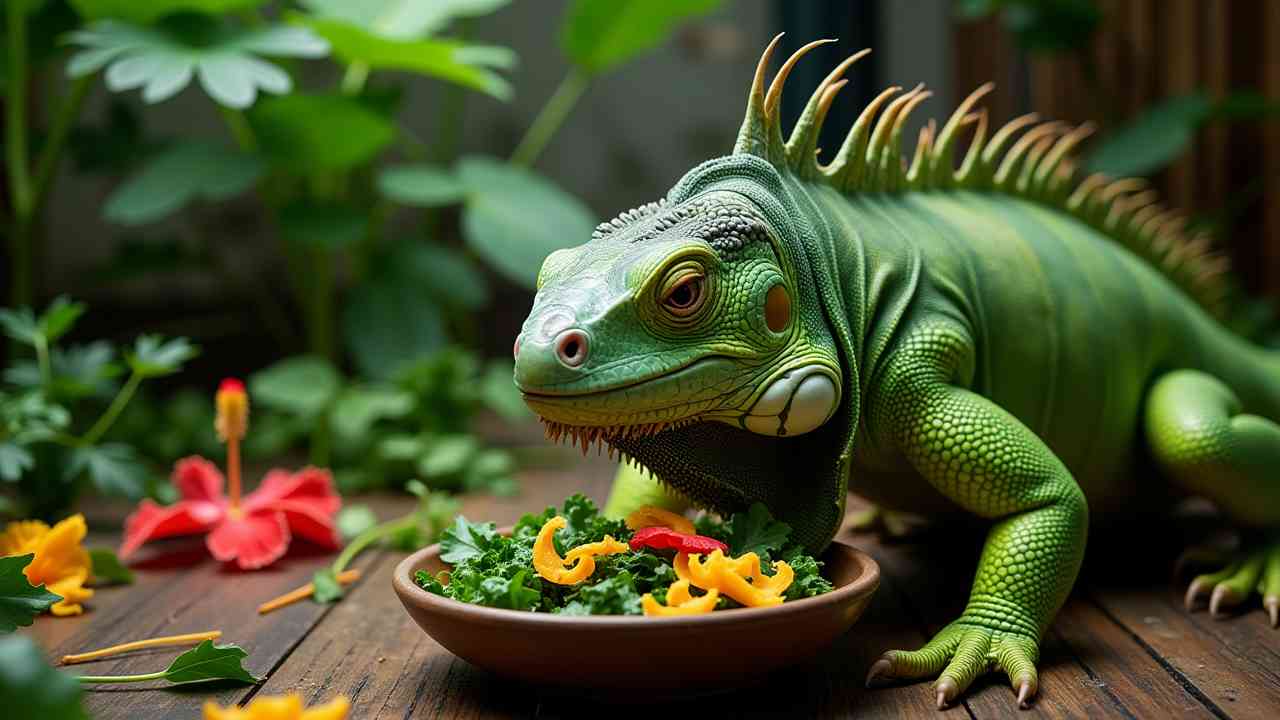
🥬 A Guide to the Iguana Diet (What to Feed Your Pet Reptile)
🥬 A Guide to the Iguana Diet (For a Long and Healthy Life) 🥬
❗ CRITICAL VETERINARY WARNING: The Green Iguana has one of the most specific and commonly misunderstood diets in the pet world. An improper diet is the #1 cause of death in pet iguanas. You must follow a strict diet plan. This guide is for informational purposes only and is not a substitute for professional veterinary advice.
Iguanas are beautiful and intelligent reptiles. However, their dietary needs are complex and non-negotiable. Unlike many other lizards, they are not opportunistic eaters. A proper iguana diet is the key to preventing serious and fatal health conditions.
This guide will explain the proper diet for a Green Iguana, the most common pet species. Let's explore what your herbivore friend needs to thrive. ✅
🤔 First, What Kind of Eater is an Iguana?
The single most important thing to know about your iguana's diet is that they are strict herbivores. In the wild, they eat leaves, flowers, and some fruits. They are not designed to digest animal protein. Feeding an iguana insects, dog food, or any meat will cause severe kidney failure and lead to a premature death.
- What is the Foundation of a Healthy Iguana Diet? (The Salad)
The foundation of your iguana's daily meal should be a "salad" made of dark, leafy greens. This should make up the majority of what they eat. The key is choosing greens that are high in calcium and low in harmful substances.
What are the Best Greens? (Staple Foods)
These should be the base of their diet:
- Collard Greens
- Mustard Greens
- Dandelion Greens
- Turnip Greens
- Watercress
What Greens Should Be Limited? (Use Sparingly)
Many "healthy" greens are actually bad for iguanas in large amounts. This is because they are high in oxalates (which bind calcium) or goitrogens (which affect the thyroid). These should be a very small part of the mix, if used at all:
- Spinach (high in oxalates)
- Kale (high in goitrogens)
- Swiss Chard (high in oxalates)
- Broccoli & Cabbage (high in goitrogens)
And what about Iceberg Lettuce? Never feed it. It is nutritionally empty and is basically just water.
- What About Other Vegetables and Fruits?
The rest of your iguana's "salad" should be made of other vegetables and a small amount of fruit.
- Vegetables (approx. 20-30% of diet): Great choices include yellow squash, butternut squash, acorn squash, green beans, and bell peppers.
- Fruits (no more than 10-15% of diet): Fruit is a treat, not a staple. Good choices are berries (strawberries, blueberries), figs, mango, and papaya.
☀️ The MOST Important Part: Calcium & UVB Light ☀️
This is the part of the iguana diet that is most critical. Iguanas are prone to a serious condition called Metabolic Bone Disease (MBD). This is caused by a lack of calcium or an inability to use it. You must do two things:
1. Dust with Calcium Powder: You must lightly dust their salad with a calcium supplement powder (without phosphorus) at most feedings. Ask your vet for a schedule.
2. Provide UVB Lighting: This is non-negotiable. An iguana cannot use the calcium it eats unless it can synthesize Vitamin D3. It does this by basking under a special UVB light bulb. This light must be provided, it must be the correct strength, and it must be replaced every 6 months. Without this light, your iguana will get MBD and die, no matter how good its food is.
🚫 What Foods Are Dangerous or Toxic?
Never, ever feed your iguana:
- Any Animal Protein (insects, meat, dog/cat food, eggs)
- Avocado (toxic)
- Rhubarb (toxic)
- Dairy Products
The cool autumn weather means your iguana is spending all its time indoors. This is the perfect time to check your UVB bulb and ensure your pet's heating and diet are perfect. 🦎